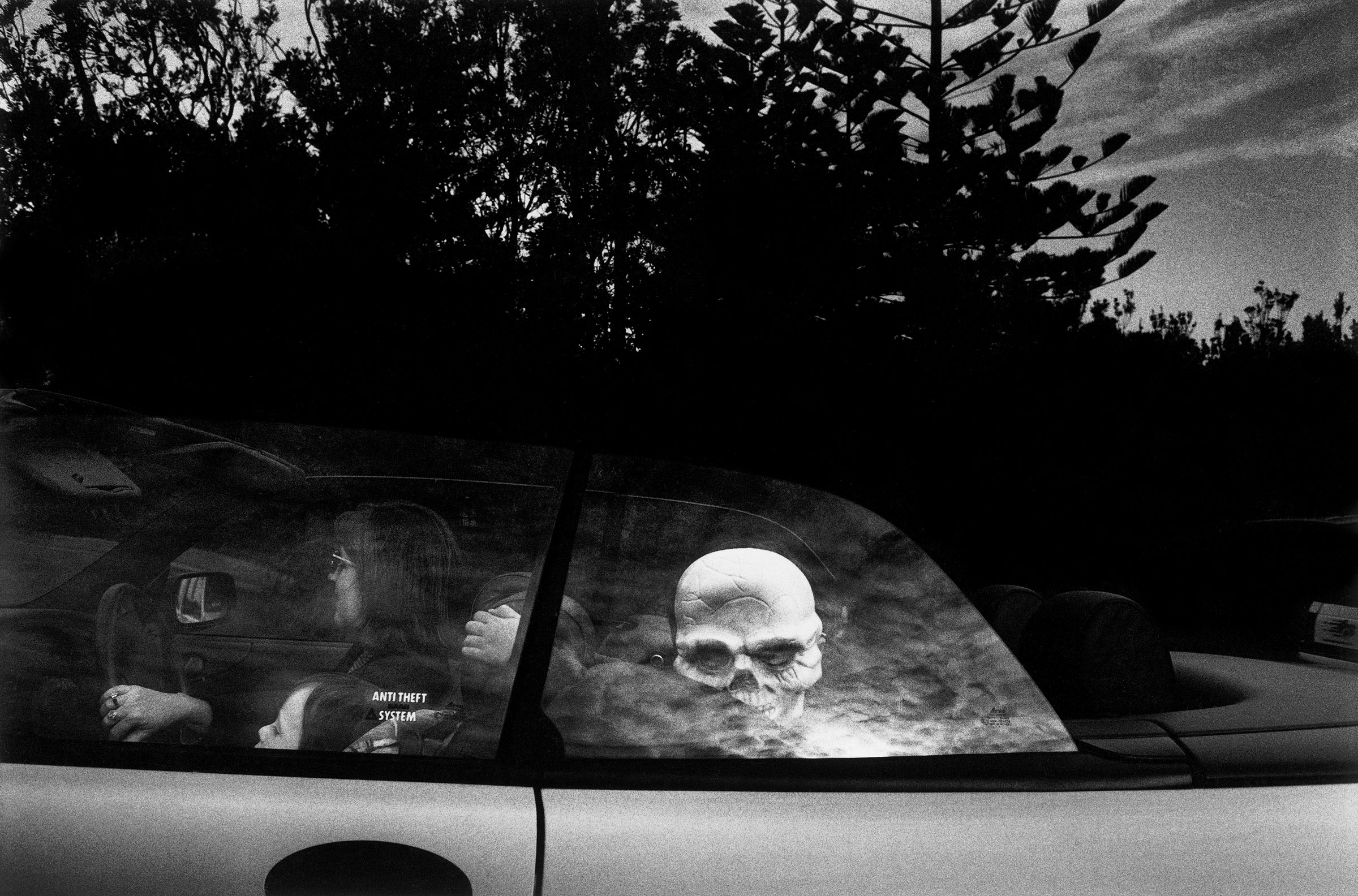
The summer I was seven years old, Jurassic Park came out on VHS. I’m dating myself, I know. What’s worse, I had to beg my parents to rent a tape player from the local independent video store so that I could watch it, staring in wonder at Spielberg and Industrial Light & Magic’s vision of a world, which until then, had lived for me only in paintings and books. Then came the kitchen scene, a pair of velociraptors hunting kids my age through a labyrinth of reflective stainless steel. I was transfixed, watching through my fingers in an ecstasy of terror. My nightmares that night were all slavering jaws and halls of mirrors, avian shrieks and the iconic click-click-click of claws on metal.
The next day, naturally, I watched it again. As far back as I can remember, I’ve had that thirst to be terrified, to be jolted out of the belief that I’m safe, that the concentric circles of intimacy which make up our society—government, community, family, and individual personhood—are immune to penetration and subversion. That feeling reminds me to take nothing for granted.
There’s an adrenaline rush to it, too. I’ve been cliff jumping many times, and the roar of the wind in your ears, the smack of freezing water—it’s the same rush you get watching disturbing grins paste themselves across the faces of the possessed in the unexpected box-office smash Smile, or seeing helpless people forced through the digestive tract of the fractal form of “Jean Jacket” in Jordan Peele’s Nope.
Where does the conscious seeking out of misery fit into a framework of thrill-seeking through vicarious experiences of gore and terror? To understand, you have to take a broader view of our relationship to horror, not just in genre fiction but in the world around us. Our connection to the sensations horror awakens and nurtures in us stretches back virtually to the dawn of civilization—if you know where to look.
“He who has learned how to die,” said Seneca, “has learned how not to be a slave.” In the Circus Maximus and countless lesser arenas, the people of the Roman Republic, later the Roman Empire, gathered to watch men and women pit themselves against mortality. Gladiators wounded and killed one another with regularity, faced down and slew (or were slain by) dangerous beasts from across the empire, and even participated in bloody reenactments of famous battles. In spite of what Ridley Scott’s Gladiator would have you believe, the Romans didn’t attend gladiatorial games to see displays of mercy or heroic teamwork. In the words of the great Roman poet Juvenal, “It’s the steel that they love.”
The thrill they’re chasing is the thrill of seeing someone rush headlong at death, playing chicken with their very mortality. Is it such a stretch to set our seemingly unending appetite—horror box office returns hit an all-time high in 2020, and remain higher than the previous 1997 record today—for watching Michael Myers and Laurie Strode’s bloody struggle in Halloween Ends, alongside such spectacles of brutal courage?
Read More: All the Michael Myers Halloween Movies Ranked From Worst to Best
Think of the archetypal campfire ghost story: A man stops for a hitchhiker, drives her home, and discovers after finding his passenger seat empty that she’s been dead for years. Death was closer than you thought. It touched you, or came close to touching you and then passed on, leaving you shaken but unharmed. That same desire—to see death, close enough to touch, and then to shiver in relief and terror as it passes by—has animated thousands of years of storytelling and public spectacle. Think of the millions who tune in and flood stadiums every week to cheer at the sight of football players or boxers radically shortening their lifespans through repeated head trauma, or who consume reams of grisly true crime books, podcasts, and film. Just as the libido, or sex drive, can be satiated through pornography and fantasy, so can the mortido, or death drive, be satisfied through vicarious experiences of terror and violence.
How else would you explain the massive draw of things like Netflix’s Dahmer and David Bruckner’s recent Hellraiser reboot, with their relentless nightmares of protracted and extreme human suffering? Or how else does one account for the continued popularity of the New French Extremity, heralded by the re-release of Kier-La Janisse’s wildly popular film theory text House of Psychotic Women, a clade of films characterized by their intense focus on visceral anguish and bodily destruction? On some level, we want to know the experience of having our flesh torn, our safety violated, our world upended in the space of a single violent instant. It reaffirms that same sense of safety and gives us a way to contextualize the suffering we see in the world around us: war and famine, mental illness and disease. When we understand what drives violence in the world, we can make sense of what may otherwise seem incomprehensible.
Our body needs these vicarious, violent delights in order to process real ones the same way some birds swallow stones to help them digest tough grains and fruits. Again and again, we come back to horror’s altar to remind ourselves of our humanity, our mortality.
Maybe what we really want is to spend time with our own death—to find intimacy with the one thing in reality we can’t ignore or avoid, before it comes to take our hand.
More Must-Reads from TIME
- Donald Trump Is TIME's 2024 Person of the Year
- Why We Chose Trump as Person of the Year
- Is Intermittent Fasting Good or Bad for You?
- The 100 Must-Read Books of 2024
- The 20 Best Christmas TV Episodes
- Column: If Optimism Feels Ridiculous Now, Try Hope
- The Future of Climate Action Is Trade Policy
- Merle Bombardieri Is Helping People Make the Baby Decision
Contact us at letters@time.com